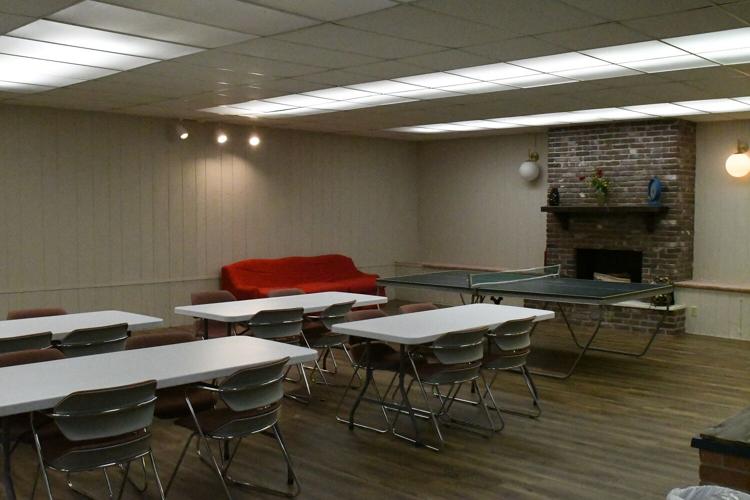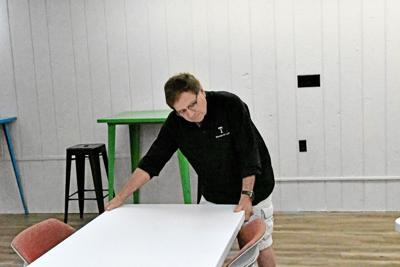REGIONAL—Several types of bullying behaviors are on the rise in N’West Iowa, according to data in the most recent Iowa Youth Survey Report.
The findings from the survey, which was conducted by the Iowa Department of Public Health’s Division of Behavioral Health Sept. 28-Nov. 19, were released in May.
The survey is given every other year to students in sixth, eighth and 11th grades and is meant to reflect behaviors, attitudes and the mental and physical well-being of youth in Iowa. The information also is used to help identify youth development needs in the state.
In one section of the survey, students report how many times they have experienced various types of bullying in the past month. Some of the highest-reported bullying categories included teasing, exclusion, physical aggression and spreading lies or rumors.
Students in all three grade levels surveyed in the four N’West Iowa counties mostly reported higher rates of experiencing those forms of bullying in 2021 compared to rates recorded in 2018.
In 2018, for instance, 15 percent of sixth-graders surveyed in Sioux County said they were called names or teased once in the past month. That figure jumped to 27 percent in 2021. The increase in the same period for eighth-graders in Sioux County was 18 to 26 percent and for high school juniors it went from 13 to 20 percent.
That type of bullying more than doubled in O’Brien County for juniors, with 7 percent saying it happened to them once in the past month in 2018 and 19 percent saying so in 2021. In Osceola County, that statistic jumped from 14 to 26 percent for eighth-graders and 17 to 29 percent for juniors.
Osceola County also saw an uptick in the percentage of eighth-graders who reported being excluded once in the past month: 11 percent in 2018 and 23 percent in 2021.
Aggression and rumors
Reports of being hit, kicked or shoved once in the past month for sixth-graders increased from 8 percent to 16 percent in Osceola County and 10 to 18 percent in Sioux County. That figure for eighth-graders in O’Brien County was 10 percent in 2018 but 19 percent in 2021.
All four counties also saw across-the-board increases in students being the subject of lies or rumors once in the past month from 2018 to 2021.
The upticks for that category were especially pronounced for high school juniors: In O’Brien County, it went from 12 to 24 percent; in Osceola County, 17 to 27 percent; and in Sioux County, 13 to 25 percent. Junior responses in Lyon County meanwhile went from 15 to 16 percent for that data point.
In some cases, a greater percentage of students in 2021 reported certain types of bullying happening multiple times compared to the percentage who said it happened once.
In O’Brien County, for example, 18 percent of eighth-graders were teased or called names once, while 23 percent had it happen two to four times and 21 percent experienced it more than 10 times. Nineteen percent of sixth-graders and juniors in the county reported that type of bullying once, and 21 percent in each of those grades said it happened to two to four times.
‘Important difference’
Jeremy Koerselman, a mental health therapist and registered play therapist at All Things New Therapy Services in Orange City, said there is a distinction between isolated instances of kids being mean to one another and consistent, systematic mistreatment of one’s peers.

Jeremey Koerselman
“It’s an important difference because of how you’d approach it. Because it’s not just anybody being mean that’s bullying,” Koerselman said. “But when it’s somebody or a group of people with greater power authority, and they’re targeting somebody consistently, that’s technically bullying.”
He said kids who are subject to persistent bullying also have a harder time overcoming such mistreatment because of how it drains them of their self-confidence.
“It happens in all grades, in all schools. It takes some alertness and some teamwork to respond to it,” Koerselman said. “When I’ve worked with kids who’ve dealt with it, it’s really important for kids to know that they are loved and accepted for who they are. The biggest factor for resilience against bullying is unconditional love from somewhere.”
‘It’s just so sad’
The fact that bullying is occurring more frequently is not a surprise to Marty Wallace, a licensed mental health counselor at Therapies Inc. in Sheldon.
Wallace provides counseling to multiple school-age patients and has heard from many who experience bullying. In a few cases, he said students have left the school system to be home-schooled due to the emotional toll of bullying from their peers. Others have sought help at Avera Behavioral Health Hospital in Sioux Falls, SD.
“It used to be for behavior kind of stuff, but now it’s depression as early as fifth and sixth and seventh grade,” Wallace said.
He previously was a teacher for 20 years and later was a K-8 school counselor in the Sibley-Ocheyedan School District for 13 years. He said seeing students being bullied was always a trigger for him in those roles.
“But now that I’ve been a clinical therapist, I’m seeing more of it, and it’s just so sad,” Wallace said.
He also said the rise of cyberbullying has become more prevalent in recent years and can involve students spreading hurtful rumors about others. He pointed to how the Sibley-Ocheyedan School District in April banned cellphone usage during school hours in response to a swell of online harassment and threats on the anonymous posting app, Yik Yak.
Support group
In an effort to help students who experience bullying, Wallace and other area therapists are starting a support group for pupils who have been mistreated by their peers.
He plans to start the group meetings toward the start of the 2021-22 academic year, first for students in grades 6-8 and eventually sessions for grades 9-12. Meetings will take place in the downstairs meeting space in Sheldon’s downtown Fusion Workspace at 916 Third Ave.

The downstairs meeting space at Sheldon’s downtown Fusion Workspace will host a bullying support group that therapist Marty Wallace and other area counselors plan to hold once the new academic year starts. The formation of the group coincides with an uptick in instances of bullying in N’West Iowa.
There also will be therapeutic group games meant to go hand-in-hand with the support and educational aspects of the meetings.
Each session will include a free meal provided by a mother from Sheldon, whose middle school-age child is a patient of Wallace’s and will be involved with the support group.
The mother, who requested not to be named to protect her child’s identity, hopes the support group will help her daughter and other attendees realize they are not alone. She said her daughter previously considered killing herself and had to be hospitalized afterward for it.
She said having a child get bullied is an awful experience for a family to go through.
“Kids shouldn’t be targets,” she said. “They should be themselves and be proud of it.”
Prevention coalition
Another organization in the area that’s aiming to raise awareness of mental health issues is the O’Brien County Suicide Prevention Coalition, which was formed last summer.
“There’s a lot of stigma associated with mental health and suicide, and that prevents people from getting help and prevents people maybe from grieving in the right way too,” said Abby Wallin, the county judicial mental health advocate and one of the coalition’s founders.
The coalition’s next outreach event is a 5K Glow Run/Walk set for 9 p.m. Saturday, July 30, at Mill Creek Park east of Paullina. The event also will include lighting lanterns as a way to commemorate people lost to suicide, comfort those who’ve been affected by suicide or who may be dealing with thoughts of suicide.
“We wanted to have a fun event just to bring people together and show our faces and make sure they know that we’re here and that we care and that we have those resources available in our county,” Wallin said.
She also noted how the National Suicide Prevention Lifeline on July 16 switched from being a 10-digit number to being the easy-to-remember number, 988.
Those who dial that number will be directly connected to trained crisis counselors who provide crisis de-escalation and connect calls to nearby mental health services.
“Hopefully, it will make it easier for people. On some of our crisis cards, we have like five or six different crisis line options, which is really good for some people, but for a lot of people having more options is not necessarily a good thing,” Wallin said. “One number is pretty cool.”
MENTAL HEALTH AND SUICIDE:
Data in the 2021 Iowa Youth Survey Report showed increases from 2018 data in the percentage of N’West Iowa students who reported feeling sad or hopeless to the point they stopped doing usual activities in the past year.
In Lyon County, the percentage of sixth-graders with such feelings went up from 14 to 28 percent, while that of eighth-graders and juniors increased from 13 to 14 percent and 16 to 17 percent, respectively.
O’Brien County sixth-graders came in at 41 percent in 2021, up from 18 percent in 2018. The percentage of eighth-graders rose from 24 to 30 percent and 30 to 31 percent for juniors.
The uptick for sixth-graders in Sioux County went from 15 to 26 percent while the figures for eighth-graders and juniors rose from 23 to 28 percent and 25 to 34 percent, respectively.
In Osceola County, the percentages dipped for sixth-graders and juniors — respectively going from 26 to 20 percent and 31 to 26 percent — but jumped for eighth-graders, 28 to 32 percent.
On the other hand, percentages of students in the three grades who reported thoughts of suicide, made plans to kill themselves or who tried to kill themselves mostly dropped or remained the same as in 2018.
Sioux County was an exception, however, as 14 percent of sixth-graders had suicidal thoughts in 2021 versus 12 percent in 2018. Eighth-graders went from 18 to 19 percent and juniors from 20 to 23 percent.
Each of the three grade levels in Sioux County also saw percentage increases when it came to respondents who made a plan to kill themselves: Sixth grade rose from 3 to 6 percent, eighth grade from 9 to 13 percent and juniors from 10 to 11 percent.
Sixth-graders in Lyon and O’Brien counties likewise recorded higher percentages of suicidal thoughts and plans. In Lyon County, thoughts increased from 12 to 14 percent and plans from 4 to 5 percent, while in O’Brien County, thoughts jumped from 22 to 23 percent and plans from 9 to 10 percent.



